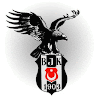
After the Second World War the company was nationalized and Societe Nationale Air France was set up on 1 January 1946. Compagnie Nationale Air France was created by a parliamentary act on June 16, 1948. The government held 70% of the new company and in mid-2002 still held a 54% stake in the airline. On August 4, 1948, Max Hymans was appointed president of Air France. During his thirteen years at the helm, he implemented a modernisation policy based on jet aircraft, specifically the Sud Aviation Caravelle and the Boeing 707.
In 1949 the company was one of the founders of SITA (Société Internationale de Télécommunications Aéronautiques). The airline used the De Havilland Comet for a short while from 1953, but soon replaced it with Vickers Viscounts. In 1959 the company started widespread use of the elegant twin-jet Sud Aviation Caravelle. It graduated to the use of Boeing aircraft, but as a national European carrier it became committed to Airbus designs from 1974.
In 1976, the airline started operating the unique Concorde SST supersonic airliner on the Paris-Charles de Gaulle to New York route as well as a number of other routes (those other routes were dropped in 1982). It flew the route Paris to New York City in 3 hours and 20 minutes, at about twice the speed of sound).
On 12 January 1990, the operations of all government owned airlines, Air France, Air Inter, Air Charter and UTA, were merged into the Air France Group. A new holding company Groupe Air France was set up by decree on 25 July 1994 and implemented on 1 September 1994. It had majority shareholdings in Air France and Air Inter (renamed Air France Europe). In 1997 Air France Europe was fully absorbed into Air France. On 10 February 1999 the French government partially privatised the airline on the Paris stock exchange. It became a founder member of the Skyteam Alliance in June 2000.
The five Air France Concordes were withdrawn from use on 31 May 2003 when all Concordes were simultaneously retired by Air France and British Airways as a result of insufficient demand following the 2000 accident, along with higher fuel and maintenance costs. Concorde F-BVFA was transferred to the U.S. Air and Space museum in Washington DC, USA. F-BVFB was given to a German museum, F-BTSD to the "Musée de l'Air et de l'Espace" in Paris, while F-BVFC was returned to its place of manufacture in Toulouse (France) at the Airbus Industrie factory.
On September 30, 2003, Air France and Netherlands-based KLM (Royal Dutch Airlines), announced the merging of the two airlines, the new company to be known as Air France-KLM. The merger became reality on May 5, 2004. Former Air France shareholders own 81% of the new firm (44% owned by the French government, 37% by private shareholders), while former KLM shareholders hold the rest. The French government's share of Air France was reduced from 54.4 per cent (of the former Air France) to 44 per cent (of the current Air France-KLM), thus in effect privatising Air France. In December 2004 the French state sold 18.4% of its equity stake in the Air France-KLM Group, reducing its stake to just under 20%.
Reference: www.century-of-flight.net













0 yorum:
Post a Comment